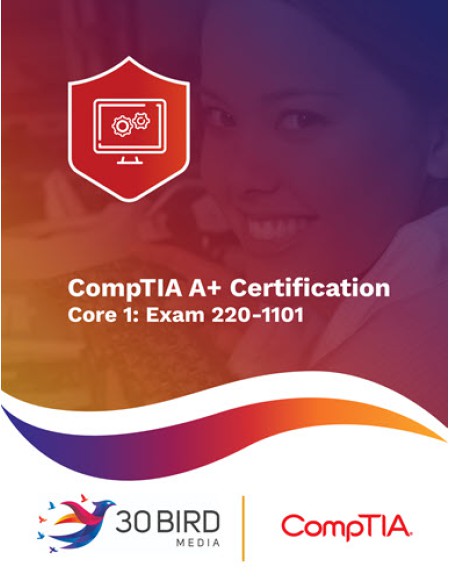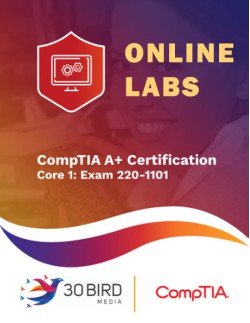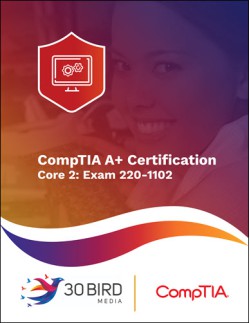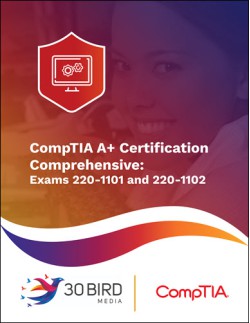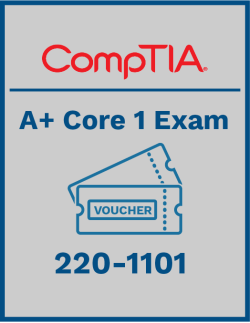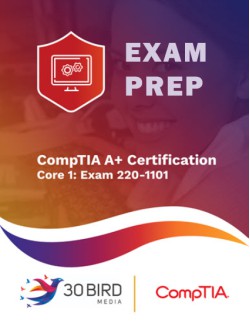Introduction
Course setup
Hardware technician skills inventory
Chapter 1: Troubleshooting
Module A: Troubleshooting theory
Module B: Safety
Chapter 2: Motherboards and CPUs
Module A: Motherboards
Module B: CPUs
Chapter 3: Computer power supplies
Module A: Power supply connectors
Module B: Power supply installation
Module C: Power supply troubleshooting
Chapter 4: Memory
Module A: Read-only memory
Module B: Random access memory
Chapter 5: Computer expansion
Module A: Expansion interfaces
Module B: Expansion card installation
Module C: Connectors and cables
Chapter 6: Physical storage
Module A: Disk drives
Module B: RAID storage
Module C: Optical drives
Module D: Other storage methods
Chapter 7: Input-output devices
Module A: Input devices
Module B: Display output devices
Module C: Display management
Module D: Other input and output devices
Chapter 8: Printers and multi-function print devices
Module A: Printer technologies
Module B: Printer installation and maintenance
Module C: Printer troubleshooting
Chapter 9: Network basics
Module A: Classifying networks
Module B: Network devices
Module C: Internet connections
Chapter 10: Network cables and connectors
Module A: Twisted-pair connections
Module B: Coaxial connections
Module C: Optical media
Chapter 11: Network protocols
Module A: TCP/IP settings
Module B: Transport protocols
Module C: Application protocols
Chapter 12: Wireless networking
Module A: Wireless technology
Module B: Wi-Fi standards
Module C: SOHO router features
Chapter 13: Virtualization and cloud computing
Module A: Virtualization
Module B: Cloud computing
Chapter 14: Mobile devices
Module A: Mobile device types
Module B: Mobile device configuration
Module C: Mobile device troubleshooting
Appendix A: Glossary
Our CompTIA A+ Core 1: Exam 220-1101 courseware comes with lab exercises in the book. Complete classroom setup instructions are included in the book's Introduction.
Regarding the hardware components used in the labs: none are exotic, and most are found in a typical computer or computer toolkit. Ideally the instructor or training center would provide them for use during the class. Instructors don’t need to have absolutely all of them, especially for each student. It is more of a “wish list” for giving students a complete hands-on demonstration of all components discussed in the hardware portion of the course. If availability is a limitation for a specific component, instructors can demonstrate a single device for the entire class, or students can perform online research about common models and their features.
Customers can also choose to purchase Online Labs for the course. For the hardware labs, the online versions are simulations that take having actual hardware out of the picture. The online labs greatly simplify setup.
CompTIA A+ Certification, Core 1: Exam 220-1101 provides the basic knowledge needed to install, configure, and support computer hardware and networking equipment. This includes:
- Applying troubleshooting skills
- Installing, configuring and maintaining PCs and devices for end users
- Understanding the basics of network protocols and infrastructure
- Properly and safely diagnosing, resolving, and documenting common hardware and network issues
- Understanding the basics of virtualization, desktop imaging, and deployment.
This course maps to CompTIA A+ Core 1: Exam 220-1101. You can download an objective map for the course from www.30bird.com. This course assumes that y have basic computer knowledge.
For more information and access to the PowerPoint files, please e-mail sales@30bird.com.
To request the PowerPoints for this course, please e-mail sales@30bird.com.

